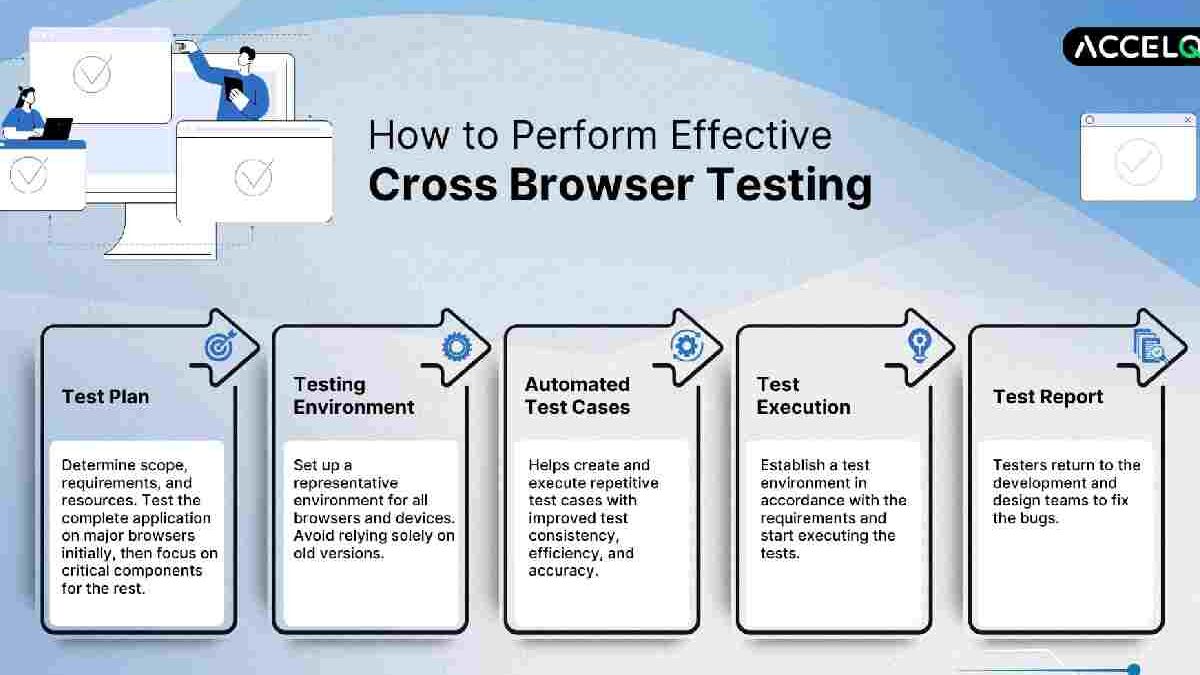Cross-browser testing involves testing web applications and websites on various browsers. Operating systems/platforms, and devices to ensure they work properly in each one. It has long been an essential part of designing, developing, and testing websites and applications because each web browser displays websites differently.
Cross-browser testing has become an increasingly important area for businesses to stay ahead of the competition by ensuring that their web applications and websites work equally well on all types and versions of browsers. You can’t afford to skip cross-browser testing, whether you’re building a brand new website/web app or running an existing one. However, if you’re unsure of the difference between manual and automated cross-browser testing, it should be obvious.
Table of Contents
How to Work Browser Testing
Google Chrome has around 50-52% of the browser market share, the largest share. It only takes one mistake to ruin a company’s reputation and revenue. Instead of risking it, cross-browser testing can mean the difference between a flawless user experience and a fleet of dissatisfied users. The more tests you do, the extra you can publish your apps. But just the Chrome test means leaving the app free for 48% of users.
Running Tests Simultaneously Allows For More Efficient Testing.
The most challenging aspect of automation testing is scalability. The need to run each test on all possible combinations of different browsers, their versions, operating systems, devices, and platforms makes it a long and tedious task.
Worse yet, every time a new version or patch needs to be tested, your test team will have to rerun those tests for all of those browser combinations.
You can easily overcome this problem by using automation. Automated cross-browser testing allows you to run parallel tests on multiple combinations quickly and efficiently, resulting in to faster deployment.
Time And Money Are Save.
Cross-browser tests often require routine and repetitive tests that can be tedious and time-consuming if done manually. Not only can you save time. But you can also improve ROI by identifying and automating all of the standard tests that need to repeat for all browser combinations (ROI).
Increased Test Coverage
As mentioned earlier. One of the biggest challenges in cross-browser testing is the need to run and re-run tests on many combinations of browsers. Test teams are often forced to skip some of these combinations due to a lack of time. However, you can quickly remove this bottleneck by using automation tests. For example, you need to run a 30-minute test using 15 different browser combinations but only have four hours to do it. In that case, automation is your best bet because running tests in parallel allow you to get the job done much faster and more efficiently.
More Accurate Test Results
Let’s face it, and we are all guilty! Even the most experienced testers can slip a flaw through the cracks and temporary lack of focus or oversight. Such human errors to avoid entirely through automation. Since your test automation tool is free from human emotions that lead to directions, such as boredom, fatigue, or stress, it can improve test accuracy.
You Can Run More Tests With Fewer Resources.
This advantage applies to any test automation, but especially to cross-browser testing. You need a lot fewer testers using test automation to run your cross-compatibility tests than if you were doing it manually. This allows for faster test execution that scales and saves time and money.
Conclusion
Cross-browser testing isn’t just about making sure your websites/web applications are responsive; It also serves to take the guesswork out of your web development process. There are dozens of browsers possible and an endless number of browser/platform/device combinations. Still, automated cross-browser testing makes it a lot easier to test all of these options.

